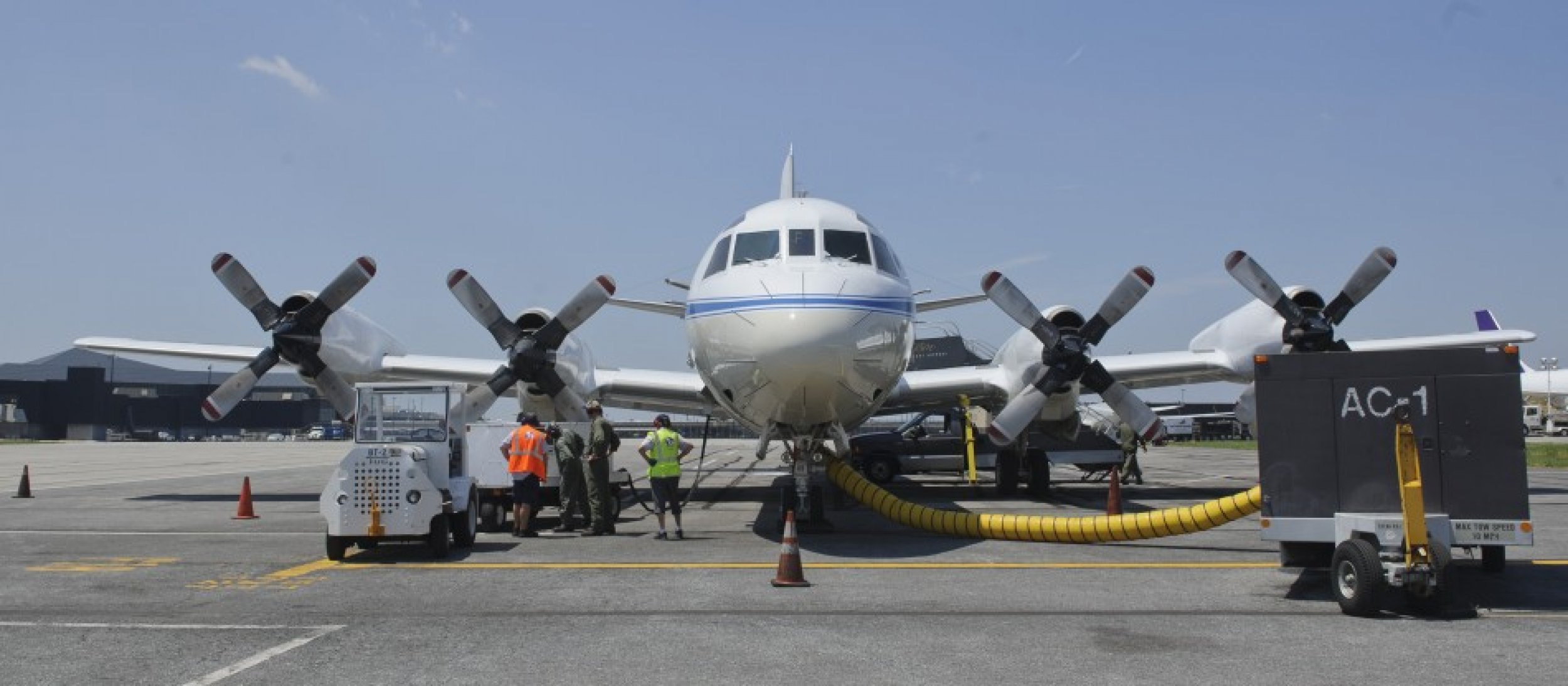NASA to Monitor Ground-Level Air Quality from Space; Glimpse Research Aircraft Photos
NASA has planned about 14 DISCOVER-AQ flights through July for a mission to enhance the capability of satellites to measure ground-level air quality from space.
DISCOVER-AQ, which stands for Deriving Information on Surface conditions from Column and Vertically Resolved Observations Relevant to Air Quality, is a NASA Earth Science Division research effort conducted in collaboration with the Maryland Department of the Environment, the U.S. Environmental Protection Agency and several universities.
The campaign will employ NASA aircraft to make a series of flights, with scientific instruments on board to measure gaseous and particulate pollution, beginning in 2011. NASA will announce each DISCOVER-AQ flight by 5 pm the day before the aircraft is scheduled to fly. The flights will occur between 6 a.m. and 8 p.m.
The series of flights -- which will be made by NASA Langley's King Air and NASA's P-3B – will commence over Baltimore-Washington, D.C. in 2011. Other future flights may include Houston (2013); Sacramento (2013); and a final site in 2014 to be determined.
The measurements will be taken in concert with ground observations in order to shed light on how satellites could be used to make similar, consistent measurements over time, with the ultimate goal of putting better data in the hands of policymakers and elected officials.
NASA's DISCOVER-AQ air quality field campaign is scheduled to take to the skies over the Baltimore-Washington traffic corridor on Friday, July 1, from 10:30 a.m. to 6:30 p.m. EDT. NASA's P-3B research aircraft will fly at low altitudes over the northeast Maryland study region.
NASA's P-3B is a large, 117-foot, four-engine turboprop, which is carrying nine scientific instruments. It will fly as low as 1,000 feet above the ground along a route that will take it over major roadway traffic corridors. The P-3B also will make spiral ascents and descents over six locations where air-quality measurements are being made from ground stations.
In recent years, progress in reaching air quality goals has begun to plateau for many locations. Furthermore, near-surface pollution is one of the most challenging problems for Earth observations from space.
However, with an improved ability to monitor pollution from satellites from DISCOVER-AQ, scientists could make better air quality forecasts, more accurately determine the sources of pollutants in the air and more closely determine the fluctuations in emissions levels. In short, the more accurate data scientists have at hand, the better society is able to deal effectively with lingering pollution problems.
DISCOVER?AQ will focus on NASA's goals to study the Earth from space to increase fundamental understanding and to enable the application of satellite data for societal benefit.
DISCOVER?AQ aligns with priorities for both the Atmospheric Composition Focus Area and the Applied Sciences Air Quality Program at NASA. Fundamentally, DISCOVER?AQ will provide data needed to critically examine the ability to determine surface air quality conditions from space.
Take a glimpse of P-3B NASA research aircraft after it lands at Baltimore/Washington International Thurgood Marshall Airport:







© Copyright IBTimes 2024. All rights reserved.











